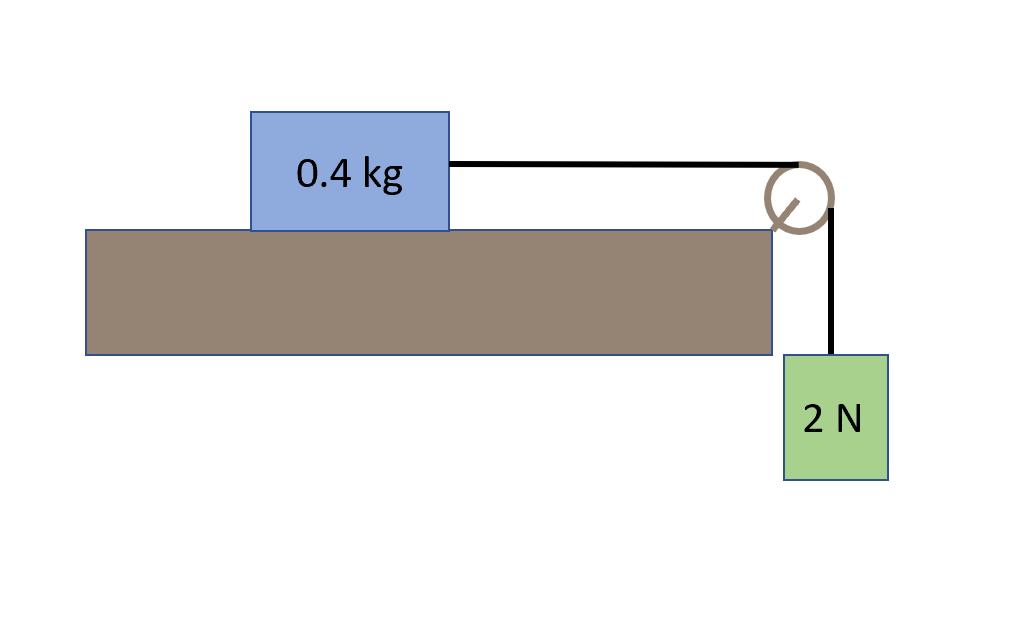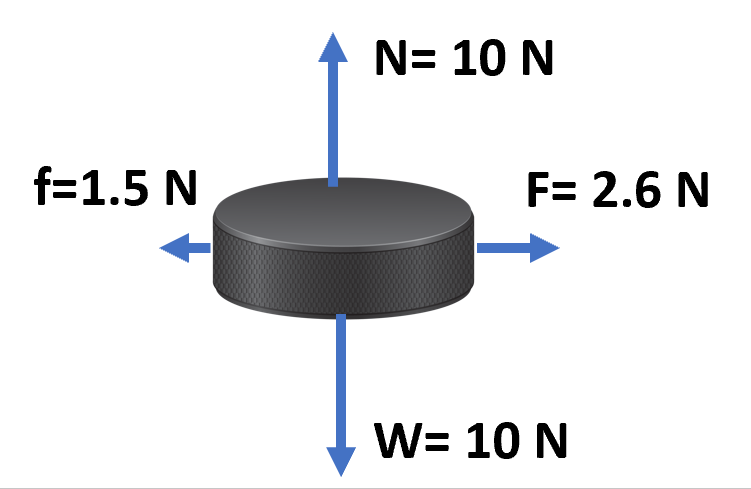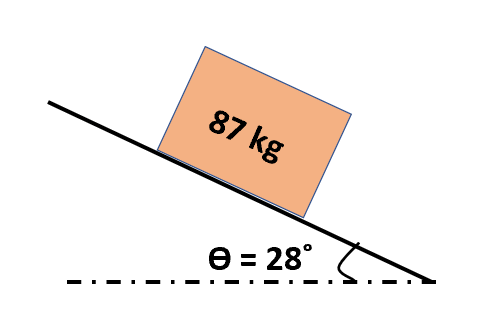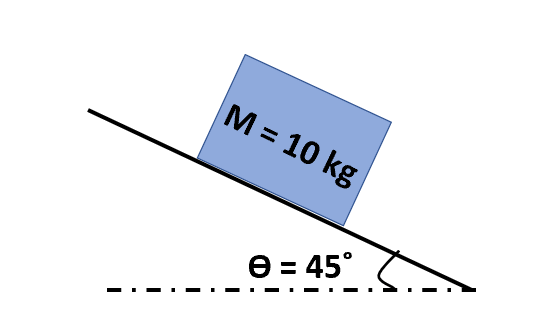What is the difference between static and kinetic friction?
Static friction occurs when a force is being applied to an object, but it does not move (stationary).
Kinetic friction occurs when a force is being applied to an object, and the object is moving.
What is the force of friction acting on a 10 kg block sliding on a concrete floor? (μk=0.65)
f = 65 N
A 50 kg crate is being pushed on a horizontal floor with a constant velocity. Given that the coefficient of kinetic friction between the crate and floor is μk=0.1, what is the push force F?
F = 50 N
A 70 kg person sits on a 5 kg sled and is pulled along the floor with a force of 100 N at a constant velocity. Is this static or kinetic friction? What is the coefficient of friction between the box and the surface?
μk=0.13
Kinetic friction because the object is moving.
A 300 N force is required to get a desk to just begin moving. If the coefficient of max static friction is μs=0.35, what is the mass of the desk?
m = 85.7 kg
Imagine that friction suddenly vanishes. List two ways life would be affected.
- No moving object will come to rest by friction.
- Vehicles will not stop by applying brakes.
- We will not be able to write.
- We will not be able to walk.
- We will not be able to hold things.
A force of 10 N is applied to a 2 kg crate on a rough horizontal surface. Assuming the coefficient of kinetic friction is μk=0.24, find the magnitude of the force of friction. Is the crate accelerating, why or why not?
f = 4.8 N
Yes, the crate is accelerating since the applied force is greater than the friction force.
A chair of 25 kg sits on a leveled floor. If the coefficient of kinetic friction between the floor and chair is μk=0.24, what force is needed to pull the chair with an acceleration of 2.6 m/s^2?
T = 125 N
A 20 kg box is initially at rest on a surface. A force of 75 N causes the box to begin moving. After the initial movement, a 60 N force is required to keep it moving at a constant speed. What are the static and kinetic coefficients of friction?
μs = 0.375
μk = 0.30
A box of mass 200 kg is slid across a cement floor. The force pushing the box is 500 N and the coefficient of kinetic friction between the box and the floor is μk=0.20. What is the acceleration of the box?
a = 0.5 m/s^2
A block weighing 300 N is moved at a constant speed over a horizontal surface by a force of 50 N. What does "constant speed" tell you about the value of friction?
Friction equals the applied force.
f= 50 N
A cup of coffee of mass 0.25 kg sits on the edge of a table. A person walks by and accidentally hits the cup with a force of 2 N. If the coefficient of static friction between the cup and the table is 0.7, what is the maximum static friction of the cup? Based upon the maximum static friction value, does the cup fall off the table? Why or why not?
fmax= 1.75 N
Yes, the cup of coffee falls off the table since the applied force is greater than the maximum static friction.
A 100 N force is applied to a 50 kg box sitting on a horizontal surface. Suppose the coefficient of static friction is μs=0.25. Is this applied force enough to move the box?
No, the applied force is not enough to move the box.
A 0.4 kg book lying on a horizontal surface is attached to a horizontal string that passes over a smooth pulley. When a weight of 2 N is attached to the other end of the string, the package is just about to move. Find μs, the coefficient of static friction.

μs = 0.5
A person is trying to move a stove into their new home. They push the stove, along the floor, with a force of 260 N. The coefficient of kinetic friction between the stove and floor is μk=0.40. If the stove has an acceleration of 1.8 m/s^2, what is the mass of the stove?
m = 44.8 kg
A hockey puck has a mass of 1.0 kg. The coefficient of kinetic friction between the puck and ice is 0.15. A force of 2.6 N is applied horizontally to the puck to accelerate it to the right, Draw and label all the forces acting on the puck.

A block weighing 20 N is pulled by a rope horizontally along a surface. Assume the coefficients of static and kinetic friction between the block and the surface are μs=0.8 and μk=0.6. Find the magnitude of the frictional force on the clock if:
a) The block is pulled by a tension force of 15 N.
b) The block is pulled by a tension force of 20 N.
a) fs = 15 N
b) fk = 12 N
A block of 40 kg is sitting on a table and is pulled by a rope. If the coefficient of kinetic friction between the table and block is μk=0.35, what tension is required in the rope to make the block move with an acceleration of 1.8 m/s^2?
T = 212 N
An 87 kg crate sits on a ramp that is at an angle of 28-degrees. If the crate accelerates down the ramps with an acceleration of 1.34 m/s^2, what is the coefficient of kinetic friction between the crate and ramp?

μk = 0.38
A block of mass M = 10 kg is sitting on an inclined surface at an angle of 45-degrees. Given the coefficient of kinetic friction is uk=0.5, what is the acceleration of the block down the ramp?

a = 3.6 m/s^2